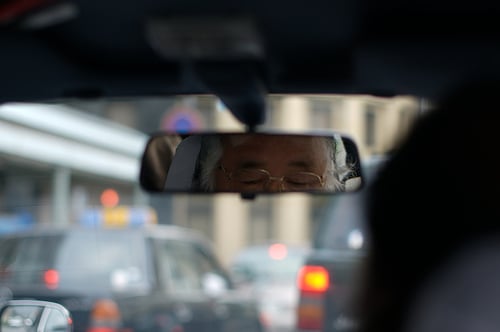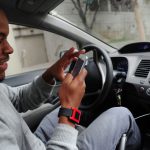Kids and the ride sharing industry
Uber, Lyft and other ride sharing apps were designed with busy adults in mind, but, lately, kids and teens are using the apps for both school-time and playtime. Busy parents are organizing rides using the apps for their young kids, while teens, who have become increasingly disenchanted with getting behind the wheel themselves, are shying away from the DMV and instead piling into the backseat of an app-hailed ride.

Image from ☻☺.
Cash and convenience are two of the reasons behind the decline in teens’ interest in driving themselves. And their interest has dropped dramatically: As the New York Times reports, one study discovered that the number of 16-year-olds with a driver’s license in the U.S. dropped down to 28% in 2010, from 46% in 1983. As Brandon Schoettle, a project manager at the University of Michigan Transportation Research Institute, tells the Times, “Having the convenience of Lyft and Uber probably outweighs the money and cost of owning a vehicle… The cellphone also makes it so much more convenient to get a ride from a friend or taxi service.”
As for safety, delaying teenagers from driving has certain benefits. Federal statistics published last April noted that 1,875 drivers ages 15 to 20 were killed in car crashes in 2012, while 184,000 young drivers were injured that same year. But ride sharing apps bring up other safety, and legal, issues: Lyft, Uber and Sidecar all state in their policies that unaccompanied children — meaning those under age 18 — are not allowed to use the app if they’re not riding along with an adult. (While Uber does conduct background checks, it also expressly says that the company is not liable if something goes awry during a ride.)
While Uber spokesman Taylor Bennett told The Clarion Ledger that Uber had no comment on the rising number of teens and younger kids who are using the app to get around, New York University professor Arun Sundararajan explained that parents should be careful when considering using a rideshare app for their kids or tweens. “Until we understand what the risks associated with this are, and that can only come with time. I would be cautious about engaging in behaviors like sending kids alone in an Uber or Lyft,” he told CBS News.
There are other family solutions, too: UberFAMILY which launched last year, offers traditional Uber rides with car seats. Shuddle, a new service debuting in San Francisco almost entirely staffed with female drivers, takes the concept a step further: It lets parents order after-school and other scheduled pickups for their kids as young as age 7. The company’s drivers are comprised of “caregivers, teachers, nannies and stay-at-home moms looking to pick up extra cash… [who] are screened and trained to go into buildings, meet with teachers and other adults, and sign kids in and out of school, sign in at orthodontist appointments and take children right in to Scout meetings,” reports The Ledger.
Shuddle founder, Nick Allen, had co-founded rideshare service Sidecar, and hopes to bring Shuddle to other areas of the country. As for fears of letting kids driver with strangers, he tells Forbes, “I heard the same argument when we started Sidecar, that no one wanted to get into a car with a random stranger,” he says. “But kids already do that: taking carpools, riding on the school bus or city bus, riding a bike to school themselves.”
Related Posts
Category: Transportation

















